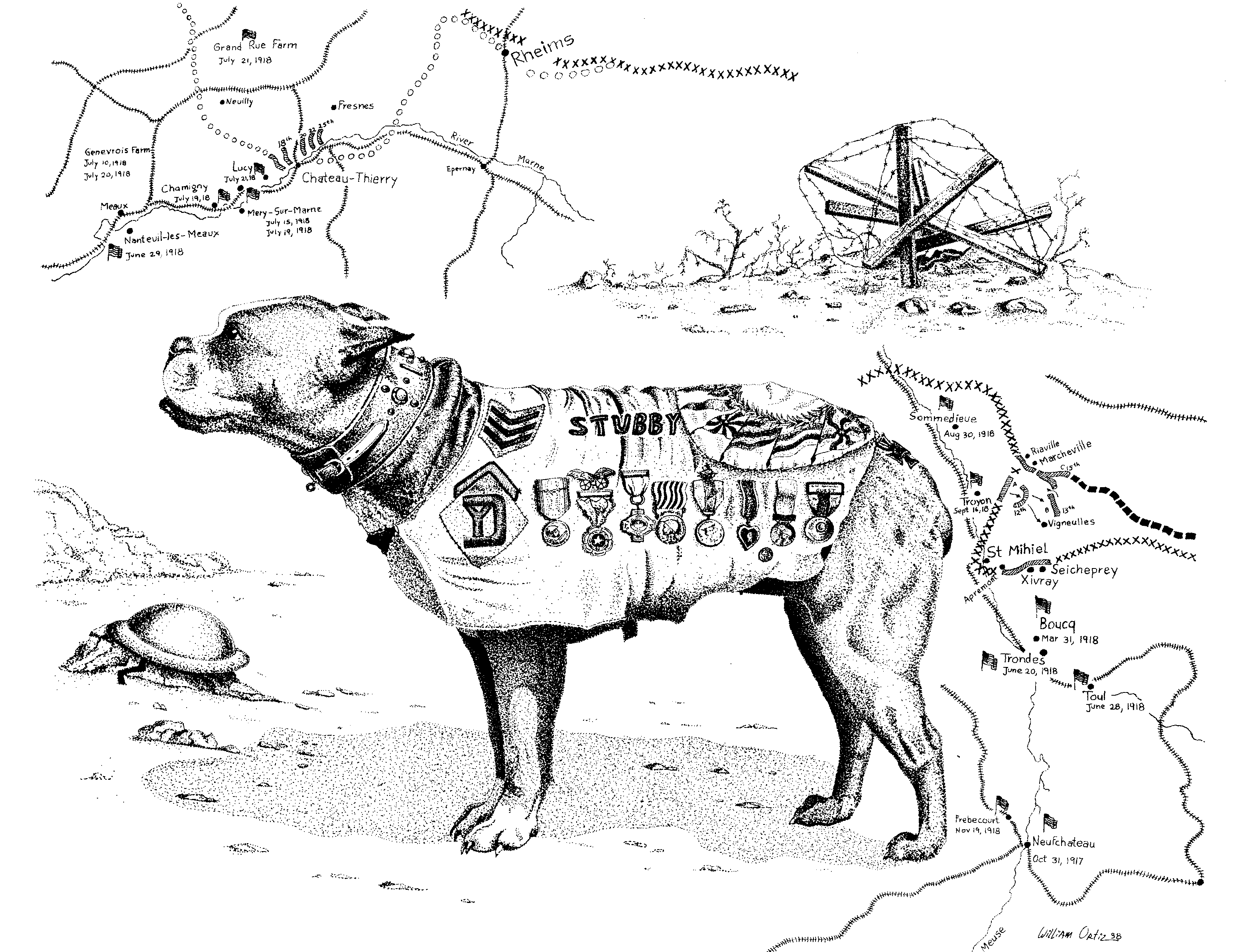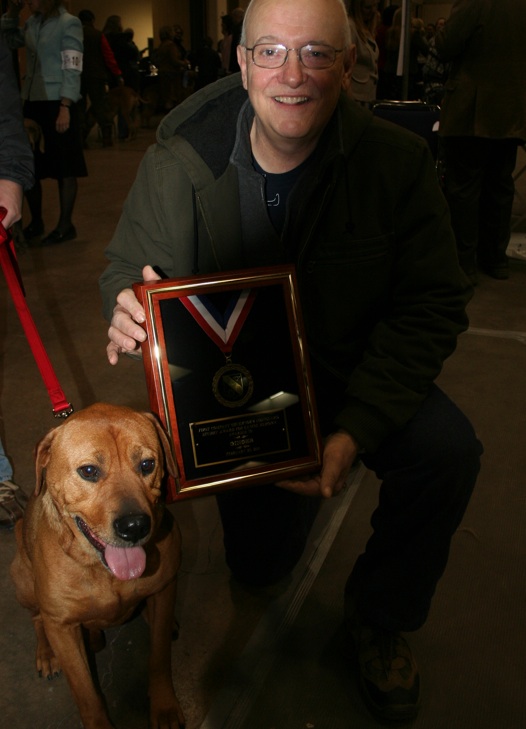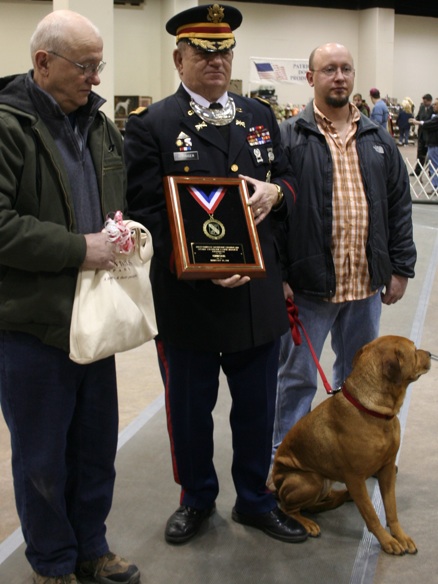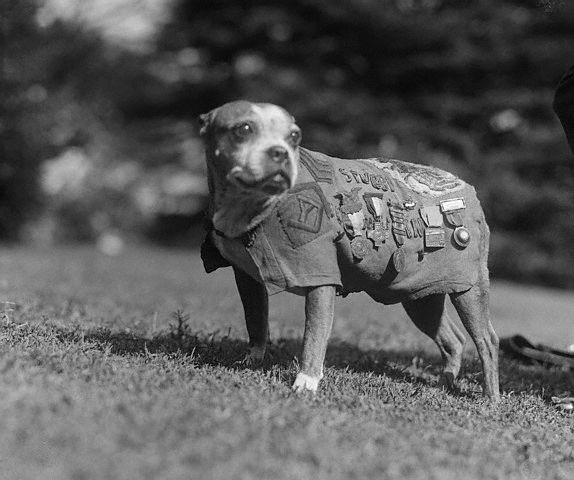Companions for Life: ‘Stubby’ Legacy and ‘Ginger’
The First Company Governor’s Foot Guard is the oldest continuously serving military organization in the U.S. The unit sponsors The First Company Governor’s Foot Guard Athletic Association Dog Show and Obedience Trials at the XL Center in Hartford, where the 2011 “Stubby” Award was presented.
The 2011 First Company Governor’s Foot Guard “Stubby Award for Canine Heroism” was given to “Ginger” – an affectionate Labrador Retriever, Boxer, Rottweiler mix owned by Dan and Ann Marie Cewe, for her Jan. 14 intervention during an attempted robbery at Glenwood Wine & Spirits Outlet in Clinton. According to police reports, she ran towards the robber and chased him out of the business. Ginger likes peanut butter bones and fetching tennis balls. In the store she amiably greets customers and keeps the owners and employees company.
This AKC-sanctioned all-breed obedience and junior showmanship event helps fund two scholarships given to pre-veterinary students at the University of Connecticut; one attending the School of Agriculture and another attending the School of Natural Resources. More than 140 different dog breeds were represented from the U.S. and Canada. Show superintendent is MB-F, Inc. of Greensboro, NC, one of the premier dog show producers and managers in the country.
The organization's match show is held later in the season at the First Company Governor’s Horse Guard reservation in Avon.
Stubby (1916 to March 16, 1926) was the most decorated war dog of World War I and was the only dog ever promoted to sergeant through service during combat. By the way, the story goes that Stubby was found on the Yale College campus in 1917 by John Robert Conroy and is of an unknown breed, though some speculate that he was part Boston terrier, part pit bull. (Some say otherwise.)
About the Stubby Award: In February 1918, “Stubby,” a mixed breed pup adopted by a member of the First Company Governor's Foot Guard and smuggled overseas by his owner, saved soldiers from sure death by alerting them to a gas attack.
By the end of the war, after being wounded multiple times and performing other heroic actions such as finding and holding a German spy for allied troops, Stubby was promoted to sergeant and received several awards. Today, the First Company Governor's Foot Guard continues to recognize special animals by presenting the Stubby Award to dogs involved in acts of heroism in Connecticut.”For more information see www.governorsfootguard.com/dogshow. Members serve under the command of Major Commandant William Oefinger.
From the official state of Connecticut Military Department site, which describes Stubby's war career and adds this for his life after the war:
“Oddly enough this not the end of the story, but rather in some ways the beginning. Stubby became something of a celebrity.
“He was made a lifetime member of the American Legion and marched in every legion parade and attended every legion convention from the end of the war until his death. He was written about by practically every newspaper in the country at one time or another. He met three presidents of the United States – Wilson, Harding and Coolidge – and was a lifetime member of the Red Cross and YMCA. The Y offered him three bones a day and place to sleep for the rest of his life and he regularly hit the campaign trail, recruiting members for the American Red Cross and selling victory bonds.
“In 1921 General Blackjack Pershing who was the supreme commander of American Forces during the War pinned Stubby with a gold hero dog’s medal that was commissioned by the Humane Education Society the forerunner of our current Humane Society…
“In 1925 he had his portrait painted by Charles Ayer Whipple who was the artist to the capital in Washington, D.C. That portrait currently hangs in the regimental museum in New Haven.
“In 1926 Stubby finally passed on. His obituary in the New York Times was three columns wide by half a page long. Considerably more than many notables of his day.”
Editor's note: This story has been revised and updated.





